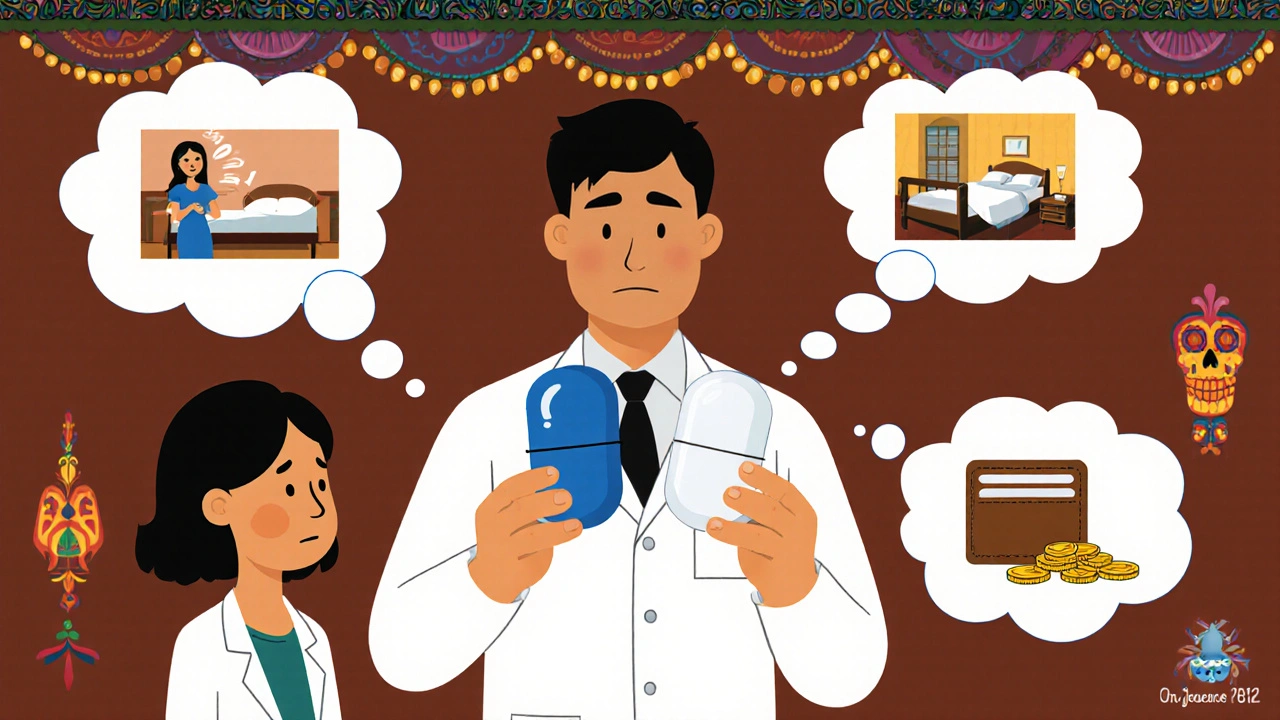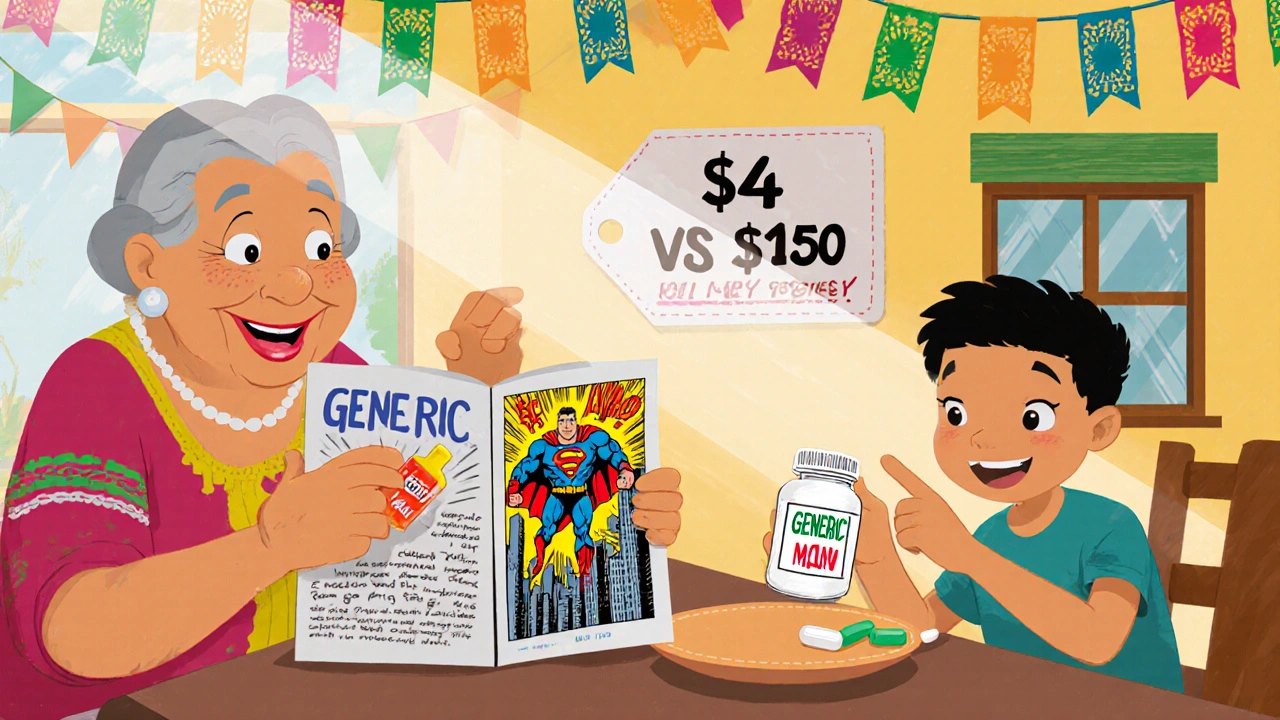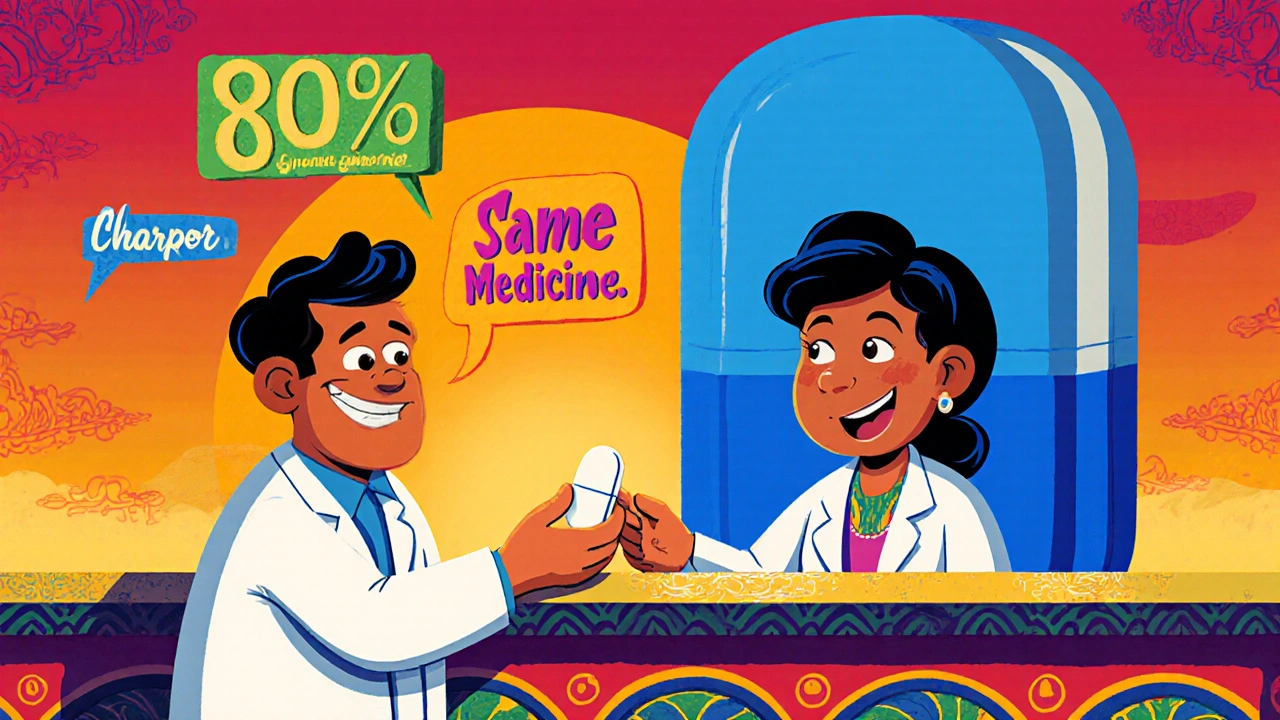Every year, millions of people in the U.S. switch from brand-name drugs to generics - and most never notice a difference. Yet, many still refuse. Why? It’s not about science. It’s about perception. And that’s where doctors come in.
Generics Are Not Second-Class Drugs
The FDA requires generic drugs to contain the exact same active ingredient, strength, dosage form, and route of administration as the brand-name version. That’s not a suggestion. It’s the law. But here’s what most people don’t know: generics must also prove they deliver the same amount of medicine into your bloodstream at the same rate. That’s called bioequivalence. The standard? The generic’s absorption must fall between 80% and 125% of the brand’s. That’s a tight range - tighter than many over-the-counter painkillers are tested.
And it’s not just about the active ingredient. Generic manufacturers must follow the same strict manufacturing rules - Good Manufacturing Practices (GMP) - as Pfizer, Merck, or Johnson & Johnson. The FDA inspects over 1,500 generic drug facilities every year. Many of those plants are the same ones that make the brand-name versions. The only real difference? Price.
Generics cost 80-85% less. A brand-name blood pressure pill might run $150 a month. The generic? $4 at Walmart. That’s not a marketing trick. That’s the result of patent expiration and competition. And it’s why generics make up 90% of all prescriptions filled in the U.S. - but only 23% of total drug spending.
Doctors Know This. So Why Don’t They Prescribe More Generics?
Here’s the surprising part: most doctors agree generics are just as safe and effective. The American College of Physicians told its members in 2016: “Prescribe generic medications, if possible.” Their reasoning? Better adherence. Patients are 6% more likely to keep taking their meds when they’re cheaper. That’s not small. It means fewer hospital visits, fewer complications, fewer deaths.
Yet, studies show only 72% of new prescriptions are written as generics. Why the gap? It’s not because doctors are ignorant. In fact, 96% of Saudi doctors in one study said they understood generics were therapeutically equivalent. But only 16% said they’d use them in all cases.
Why? Because patients push back. One internist in Texas told a Reddit thread: “I’ve had patients insist on brand-name lisinopril costing $350/month when the generic is $4. They say, ‘It just doesn’t feel right.’” That’s not irrational. It’s psychological. When you’ve taken a blue pill for years, switching to a white one feels like a downgrade - even if it’s chemically identical.
The Power of Appearance
Look at the pill. The color. The shape. The imprint. These aren’t random. Brand-name companies spend millions designing their pills to feel familiar, trustworthy, even premium. Generics? They look different. And that matters more than you think.
The FDA runs a “Look Alike Sound Alike” program to reduce confusion between drugs. Since 2018, it’s cut patient mix-ups by 37%. But it can’t fix perception. A 2015 FDA study found patients often believed generics were less effective - not because they were, but because they looked different. One woman in the study said: “I took my generic blood pressure pill and felt dizzy. I thought it wasn’t working. Then I found out it was the same as the brand.” She didn’t stop because the drug failed. She stopped because her brain told her it had.
Doctors know this. That’s why some still default to brand names - not because they doubt the science, but because they’re trying to avoid the conversation. They don’t want to spend 10 minutes explaining why a white oval pill is just as good as a blue capsule. So they write the brand. It’s easier. But it’s expensive - for patients and the system.

When Generics Are Risky (And When They’re Not)
There are exceptions. Not all drugs are created equal. For drugs with a narrow therapeutic index - where even tiny changes in blood levels can cause harm - doctors are more cautious. The FDA lists 15 such drugs, including warfarin, levothyroxine, and some anti-seizure meds. For these, switching generics might require closer monitoring.
But here’s the catch: even for these drugs, studies show no meaningful difference in outcomes when switching between approved generics. The concern is real, but often exaggerated. A 2016 study of 151 doctors found no link between physician beliefs about generic cost and their prescribing habits. In other words, doctors aren’t prescribing brand names because they think generics are cheaper. They’re prescribing them because they think patients will refuse the generic.
And then there are complex drugs - inhalers, injectables, topical creams. These are harder to copy. A 2015 FDA study found patients with asthma were unsure if their generic inhaler worked as well. Not because it didn’t - but because the device felt different. The nozzle. The click. The puff. These aren’t chemical differences. They’re sensory ones. And they matter.
What Happens When Patients Switch?
A Canadian study followed over 136,000 seniors on three blood pressure drugs after generics hit the market. Emergency visits and hospitalizations went up - by 8% to 14%. At first glance, that sounds like proof generics are risky. But the researchers themselves said: “This may not reflect drug quality.” It likely reflected anxiety. Patients switched pills, got nervous, stopped taking them, and then ended up in the ER.
Meanwhile, Medicare data shows patients on generics have 12.7% higher adherence rates. That’s not a fluke. It’s money. When people pay less, they take more. And when they take more, they get healthier.
One study in the American Journal of Managed Care found better adherence from generics led to a 2.2% drop in hospitalizations for chronic conditions. That’s thousands of avoided ER trips. Millions in savings.

How Doctors Are Changing Their Approach
Change is happening - slowly. Since 2015, the number of internal medicine residency programs teaching generic prescribing has jumped from 29% to 68%. Doctors who took FDA-sponsored training saw their generic prescribing rates rise 23% in six months.
Some clinics now use scripts: “This generic is FDA-approved and works just like your old pill. It’s cheaper, and studies show people take it more consistently.” That’s not a sales pitch. It’s a fact-based conversation.
Pharmacists are stepping in too. When a patient picks up a generic, the pharmacist can say: “This is the same medicine. Just a different name.” That simple line cuts confusion. The FDA says patients are more likely to stop taking a generic if they’re not prepared for the switch. A quick chat prevents that.
What You Can Do
If you’re on a brand-name drug and your doctor suggests switching to a generic, ask: “Is this the same medicine?” The answer will almost always be yes. Then ask: “Will this change how I feel?” The answer? Probably not. But if you’ve had a bad reaction before, tell your doctor. That’s valid.
Don’t assume a different-looking pill is inferior. Don’t assume a lower price means lower quality. The science is clear. The data is solid. The savings are massive.
And if your doctor doesn’t bring it up? Ask. You’re not being pushy. You’re being smart.
It’s Not About Trusting the Drug. It’s About Trusting the System.
Generics aren’t the problem. Fear is. The system that lets brand-name drugs charge 10x more. The marketing that makes pills look like luxury items. The silence from doctors who don’t want to explain.
But you can break that cycle. Ask questions. Ask for the generic. Take it. Stick with it. And if you feel something’s off? Talk to your doctor. Not because the drug failed - but because your body and your mind are connected. And sometimes, healing starts with a conversation.


Comments (15)
Christopher K
Oh wow, another article telling me I'm dumb for not trusting a white pill that looks like it was manufactured in a basement in Bangladesh. Thanks, FDA. I'm sure the same plant that makes my $150 brand-name lisinopril also makes the $4 version - right after they finish making the fake Rolex watches. 🤡
Christopher Robinson
Really appreciate this breakdown. I used to be skeptical too - until my dad switched from brand-name statin to generic and saved $200/month with zero side effects. The pill looks different, but his cholesterol numbers? Same as before. 🤝
James Ó Nuanáin
One must observe, with the utmost gravity, that the American pharmaceutical landscape has devolved into a carnival of consumer delusion. The notion that a pill's colour or shape influences its pharmacokinetics is not merely misguided - it is a tragic indictment of the post-enlightenment psyche. The FDA, despite its rigorous protocols, is powerless against the tyranny of placebo psychology. We are not treating disease. We are treating aesthetics. And for that, I weep.
Kara Binning
I took a generic thyroid med last year and felt like I was slowly turning into a zombie. My hair fell out. I cried for no reason. I thought I was dying. Turns out? It was the same exact chemical. But my brain screamed, 'THIS ISN'T THE BLUE PILLS!' I stopped taking it. I felt better immediately. Science doesn't care how I felt. But I do.
river weiss
It is critical to recognize that the FDA's bioequivalence standards are not merely adequate - they are exceptionally stringent. The 80%-125% range is statistically robust, and multiple peer-reviewed meta-analyses confirm no clinically significant differences in therapeutic outcomes for the vast majority of generic medications. Moreover, the GMP compliance is identical across branded and generic facilities. The psychological barrier is real - but it is not a medical one.
Michael Petesch
Interesting how cultural perception of medicine varies globally. In India, generics are the default - no stigma, no drama. People trust the system because it’s affordable and consistent. Here, we treat pills like luxury handbags. I wonder if we could learn something from that.
Ellen Calnan
It’s not about the pill. It’s about control. When you’ve been sick for years, you cling to the ritual - the color, the shape, the name on the bottle. It’s your anchor. Switching feels like losing a part of your story. And no study can measure that grief. The real tragedy isn’t the price - it’s that no one asks: ‘What does this pill mean to you?’
Sam Reicks
the fda is controlled by big pharma and the generics are laced with chalk and rat poison you think your saving money but your just getting slowly poisoned by the system they want you sick so they can sell you more drugs dont trust any pill that isnt made by pfizer or johnson and johnson the blue ones are the only ones that work trust me bro
Codie Wagers
You all misunderstand the fundamental issue. The problem isn’t the pill. It’s the moral decay of a society that equates cost with value. To choose a generic is to surrender dignity. To accept a white oval tablet as equal to a branded blue capsule is to capitulate to the nihilism of late capitalism. Your body is not a ledger. It is a temple. And you are worshiping at the altar of discount bins.
Paige Lund
So… the whole article is just ‘take the cheap pill’? Wow. Groundbreaking. Next up: ‘Why people still buy bottled water when tap is free.’
Reema Al-Zaheri
As a pharmacist in Mumbai, I can confirm: patients here rarely question generics. They understand that efficacy is not tied to brand. Yet, when they travel to the U.S., they panic upon seeing a different-looking pill. The disconnect is cultural, not clinical. Education matters - but so does empathy.
Joe Durham
I get why people are scared. I used to be one of them. But after my mom had a stroke because she stopped her blood pressure med because she didn’t trust the generic - I changed my mind. It’s not about the pill. It’s about fear. And fear doesn’t care about science.
Derron Vanderpoel
my doctor switched me to a generic and i swear i felt weird for like a week… like my brain was on mute? then i realized it was just my anxiety. i started taking it again and now i feel fine. but man… the first few days were rough. i thought i was gonna die. lol
Timothy Reed
The data is clear: adherence improves significantly with lower cost. The emotional resistance is understandable, but not insurmountable. Clinics that implement pharmacist-led counseling see over 80% patient acceptance of generics. The solution is not coercion - it’s communication.
Steve and Charlie Maidment
Look, I get it. The science says it’s the same. But have you ever considered that maybe, just maybe, the brand-name version has some secret ingredient? Like, a proprietary stabilizer? Or maybe the generic manufacturers cut corners on the inactive ingredients? I mean, how do we really know what’s in there? The FDA doesn’t test every single batch, right? And what about the workers? Are they paid fairly? Are they breathing clean air? I mean… it’s not just about the pill. It’s about the whole system. And the system is broken. And I’m not just talking about the medicine.